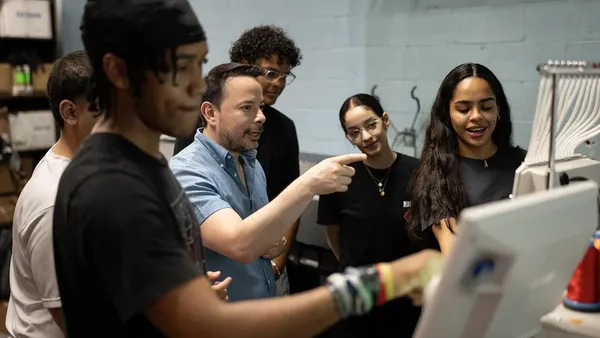Dive Brief:
- Almost 30% of states earned at best a D on their ability to educate students on financial literacy according to the most recent report from the Champlain College Center for Financial Literacy.
- The Center emphasizes, in District Administration, that students are not learning this lesson at home, particularly the economics of attending college, how much it will cost and how students will pay for it.
- States are getting better. But for districts that need help, adding small lessons like what credit card insurance is and how it accrues into math classes is one good place to start.
Dive Insight:
With the cost of a college education growing every year, students who do not have any reasonable grasp of finances are economically hobbled as they make their way into the postsecondary stage of their education. Every adult must have some financial literacy skills — even if it’s as simple as knowing whether a paycheck can cover basic monthly expenses.
Lessons on money management are few and far between, as Education Dive recently noted. But these are the kinds of classes that high school graduates have reportedly said they wished they’d taken while still in school. Curriculum administrators may want to consider adding a basic financial literacy course to high school class options, perhaps making the class a requirement for students to take before they graduate. Online classes that focus on financial literacy could be one avenue districts could pursue. Some, including one from the High School Financial Planning Program — are even free.
Today, health class is one most students must pass before receiving their high school diploma. Knowing how to live financially healthy, though, may be just as important and could be woven into existing math or even social studies requirements.




 Dive Awards
Dive Awards







